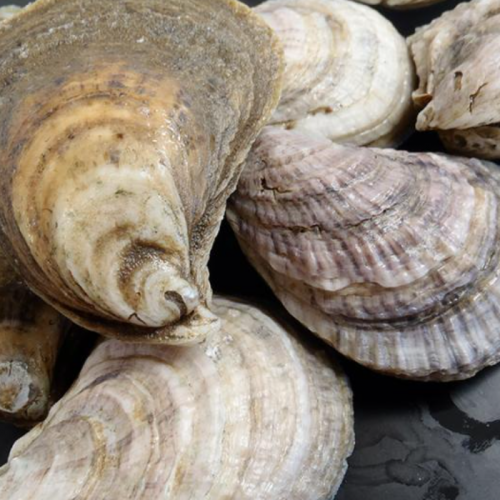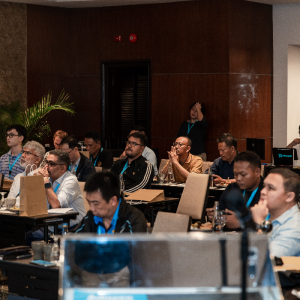
Global Study Sheds Light on the Valuable Benefits of Shellfish and Seaweed Aquaculture
| Mon, 14 Feb 2022 - 09:44
Is it possible to eat our way to cleaner water and more fish? A new global study shows that shellfish and seaweed aquaculture provide valuable benefits to people and ocean ecosystems.
Shellfish and seaweed farms provide sustainable seafood and can improve the surrounding environment. Farmed oysters, mussels, and other bivalve shellfish are some of the most environmentally sustainable sources of animal protein. Worth an estimated $350 million in 2017, shellfish are the most valuable marine seafood produced via aquaculture in the United States. Seaweed aquaculture also provides many benefits to both people and the ocean environment.
In a new study, NOAA and our partners used data from around the world to measure the ecosystem services provided by shellfish and seaweed farms. This first of its kind study estimates the economic value of these services from aquaculture on a global scale.
Shellfish and seaweed farms are considered low-to-no input because they don’t require feed, freshwater, or fertilizer. Shellfish eat algae by filtering it from the water. Seaweeds make their own food through photosynthesis like land plants. They can also improve water quality and create habitat for other species.
Read more: Maine Shellfish Farmers Gaining Confidence With Scallops
The study shows just how valuable shellfish and seaweed aquaculture’s ability to soak up excess nutrients from the water can be. It also highlights the value of the habitat it provides for economically important fish species.
International Collaboration Focused on Ecosystem Services
The project is a collaboration between researchers at NOAA, The Nature Conservancy, University of Melbourne and the University of Adelaide in Australia, the University of Maryland Extension, and Mississippi State University. They examined nutrient removal by aquaculture in 17 countries and fish habitat data from 10 countries.
“The results of this study by a multi-national team of ecologists, modelers, industry specialists, and economists are very optimistic, confirming that bivalve and seaweed aquaculture is a win-win-win for needed seafood production, water quality improvement, and jobs in rural areas worldwide,” said Suzanne Bricker, a scientist at the NOAA National Centers for Coastal Ocean Science and a co-author of the article.
“We are hopeful that the results will guide smart development of new and expansion of existing sustainable aquaculture in many countries that will provide important benefits to people and the environment.”
Read more: Plastic 2. Ocean: Seafood Packaging, Made From Shellfish
Bricker and her colleagues used data from the Milford Lab's GoPro Aquaculture Project. That project uses underwater camera footage to understand interactions between shellfish aquaculture gear and fish communities. The study also uses ongoing NOAA research on the water quality benefits of shellfish aquaculture.
“It was rewarding to work from the local to the global scale on this project. It is exciting to see that the nutrient and habitat benefits that the Milford Lab team estimated in Long Island Sound fit into the broader picture of shellfish aquaculture as a sustainable source of seafood,” said Julie Rose, a research ecologist at NOAA Fisheries and a study co-author.
“This study is particularly important as we look towards sustainable growth of the marine aquaculture sector in the United States,” said Seth Theuerkauf, science coordinator at NOAA Fisheries’ Office of Aquaculture and a study co-author.
“It shows that shellfish and seaweed aquaculture—when practiced and managed well—is not only a low impact and sustainable form of food production, but also has the unique ability to contribute towards broader goals of ecosystem recovery and resiliency.”
Read more: Helping Seaweed Farming Achieve Its Full Potential
Removing Excess Nutrients
Nitrogen is a nutrient that enters coastal waters from many human-caused sources, like agriculture, lawn fertilizer, septic systems, and treated wastewater. Too much nitrogen fuels excess algal growth, which can negatively affect water quality and human health. As shellfish filter the water to feed, they are removing nitrogen and using it to build their shells and tissues. How do researchers place a monetary value on this nitrogen removal service?
The researchers assigned dollar amounts to nutrient removal services using payments made for nutrient credits in areas where nutrients such as nitrogen are managed. They also assigned dollar amounts to the avoided costs of traditional ways of remediating excess nutrients—for example, upgrading water treatment plants.
Considering 49 estimates, shellfish and seaweed farms removed an average of about 575 pounds of nitrogen per acre. That’s roughly the weight of a grizzly bear per acre every year. There is significant variability in the estimates because of the wide diversity of farms considered. For shellfish, the value of that ecosystem service is estimated at $1,321–7,739 per acre each year. The range for seaweed aquaculture is $753–10,110 per acre each year.
Providing Valuable Habitat
The Milford Lab’s GoPro Aquaculture Project collects data on how fish use three-dimensional oyster aquaculture cages as habitat. It compares their use of oyster farms with natural rock reef habitats. The researchers compiled data from 26 different studies to estimate the value of habitat provided by shellfish and seaweed aquaculture on a global scale. They compared fish abundance between aquaculture and natural sites, including the Milford Lab’s aquaculture project. The studies included 182 fish abundance comparisons and 128 unique fish species.
Read more: Benefits When Farming Integrated Shrimp Seaweed
Abundance per fish species was 1.6 times higher on farms compared to other habitats. Aside from creating places to forage and hide from predators, farms serve as nursery habitat for young fish. As a result, fish production at farms was enhanced by an average of about 94 pounds per acre of extra fish each year. The additional fish produced could be worth $618 per acre each year to commercial fisheries, or $779 per acre each year to recreational fisheries. This study suggests that oyster farms may provide similar habitat value to fish as restored oyster reefs.
Finding the Right Places to Farm
Aquaculture provides ecosystem benefits in areas where structured natural habitats—such as oyster reefs or seagrass beds—have been lost and managing excess nutrients is a priority.
The authors emphasize that responsible development of shellfish and seaweed aquaculture is needed. That means making sure ecosystem benefits are not diminished by choosing sites that interfere with other ocean uses or natural ecosystems.
“If you farm in the right places with the right methods, aquaculture can have positive effects on the environment and animals surrounding the farm,” said Luke Barrett, lead author, from the University of Melbourne (Australia) and visiting aquaculture scientist with The Nature Conservancy.
Read more: How Artificial Intelligence, Insects and Yeast Can Boost Sustainable Aquaculture
“Responsible development of aquaculture means thinking about the local context and prioritizing new farms where they can be both profitable and environmentally beneficial.”
“This study shows that shellfish and seaweed farming provide significant economic benefits far beyond the products that are sold,” said Robert Jones, Global Lead for Aquaculture at The Nature Conservancy. “Gaining reliable economic values of these ecosystem services enables consideration of these benefits into public policy decisions, including systems that allow farmers to be compensated for the ecological benefits that they provide.”
Source: NOAA Fisheries






















